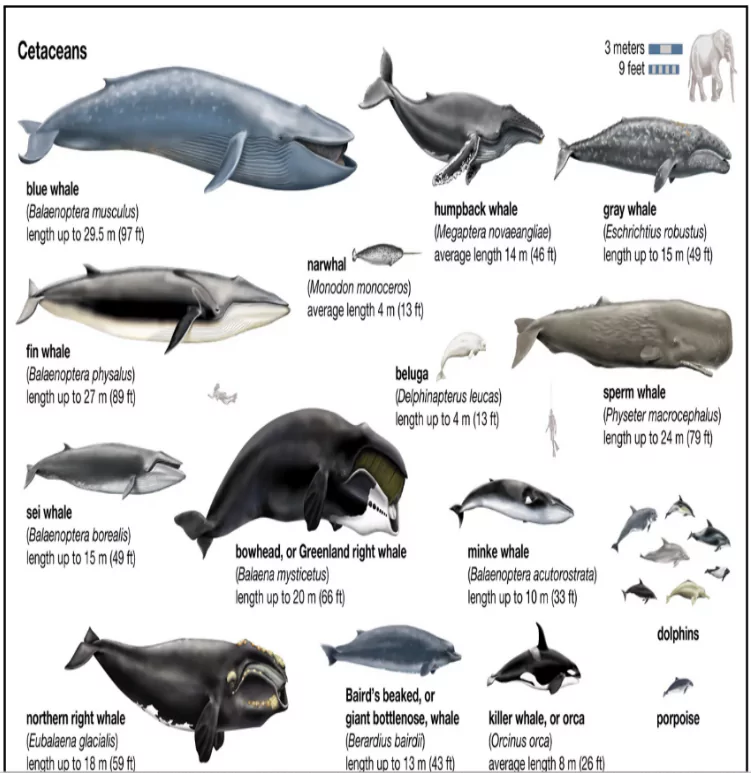A 23-year-old Venezuelan kayaker, Adrián Simancas, was briefly engulfed by a humpback whale while kayaking in the Strait of Magellan, Chile.
- The whale likely mistook the kayak for prey and accidentally engulfed Simancas before releasing him unharmed within seconds.
About Whales

- A whale is any of the larger species of aquatic mammals belonging to the order Cetacea.
- The term whale can be used in reference to any cetacean, including porpoises and dolphins, but in general it is applied to those more than 3 metres (10 feet) long.
Classification of Whales
Whales belong to two main families based on their feeding mechanisms:
- Baleen Whales : Includes species such as blue whales, humpback whales, and grey whales.
- These whales use baleen plates to filter-feed on krill, plankton, and small fish.
- Toothed Whales : Includes species such as sperm whales, beaked whales, killer whales, and dolphins.
- They have teeth but do not chew; instead, they swallow their prey whole.
Can Whales Swallow Humans?
- Baleen Whales: Despite having large mouths, baleen whales have narrow throats, preventing them from swallowing large objects, including humans.
- A humpback whale’s throat is roughly the size of a human fist, making it impossible to swallow a person.
- Toothed Whales: Toothed whales have a larger oesophagus than baleen whales, allowing them to swallow larger prey.
- However, even toothed whales cannot swallow an entire human due to the size limitations of their throats.
- Exception: Sperm whales are the only whales with throats large enough to swallow a human.
- However, such occurrences are extremely rare due to limited human-whale encounters and the species’s deep-sea habitat.
About Humpback Whales
- Physical Characteristics: The humpback whale is named for the distinctive hump on its back. It has long pectoral fins, inspiring its scientific name Megaptera, meaning “big-winged”.
- Female humpback whales are larger than males.
- Distribution and Migration: Humpback whales are found in all oceans worldwide.
- They undertake one of the longest migrations of any mammal, traveling between polar feeding grounds in summer and tropical or subtropical breeding grounds in winter.
- Unique Feeding Technique: Humpback whales use bubble net feeding, a specialized technique where they exhale bubbles in a spiral pattern beneath dense patches of prey, trapping fish for efficient feeding.
- Conservation Status
- IUCN Red List: Least Concern.
- CITES: Listed in Appendix I, indicating strict protection against exploitation.
- Behavior and Communication
-
- Breaching : Humpback whales frequently leap out of the water and crash back down, possibly for communication or parasite removal.
- Singing: Male humpback whales produce long, complex songs believed to play a role in mate attraction.
![]() 20 Feb 2025
20 Feb 2025


